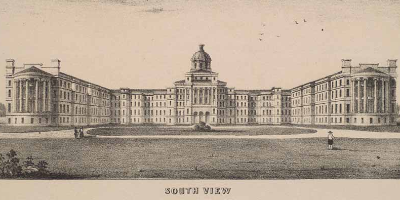oct 12, 1979 - Change from 999 to 1001
Description:
In 1979, the Joseph Workman Auditorium opened and the infamous ‘999 Queen Street’ address changed to 1001 in an effort to symbolically disconnect the new center from its stigmatized past. Also in 1979, the ‘Asylum for the Insane, Mimico’ (renamed as the ‘Lakeshore Psychiatric Hospital’ in 1966) was closed and partly re-merged with Queen Street. The end of the 1970s was the era of the de-institutionalization of psychiatric patients who were stable on medications. Unfortunately, this came without the necessary community supports such as supportive housing. It was also the era in which the inpatient population declined from a high of 1,600 in the old asylum building to approximately 400 – 500 at any given time in the new 1970s buildings. The 1990s saw newer anti-psychotic drugs (e.g. risperidone, 1994; olanzapine, 1998) with their side effects of weight gain and metabolic problems.In 1997, the City of Toronto designated the surviving 1860s boundary walls (partly rebuilt in 1888-1889) and two 1889 workshop buildings as heritage structures under the Ontario Heritage Act. Also in 1997, the Health Services Restructuring Commission (HSRC), an arms-length agency appointed by the Government of Ontario to redesign the province's health care system, released its report, which included changes to addictions and mental health care. In 1998, The Centre for Addiction and Mental Health (CAMH) was formed from the merger of the Queen Street Mental Health Centre, the Clarke Institute of Psychiatry, the Addiction Research Foundation, and the Donwood Institute. Dr. Paul Garfinkel was CAMH’s founding President and CEO.
Added to timeline:
Date:
oct 12, 1979
Now
~ 46 years ago
